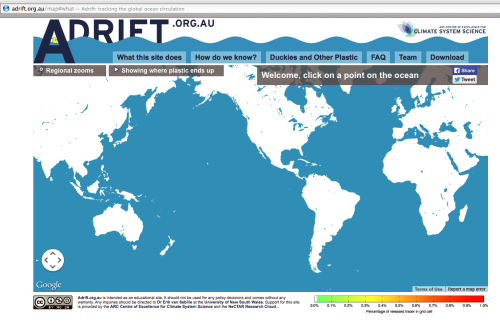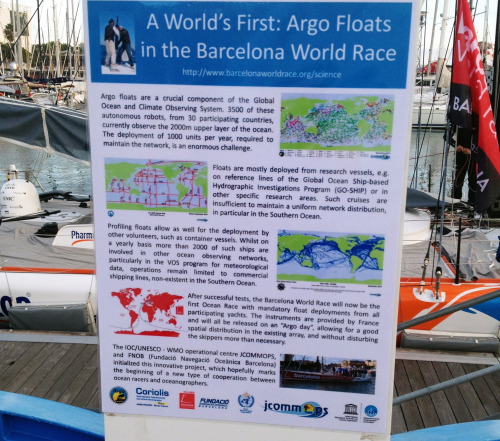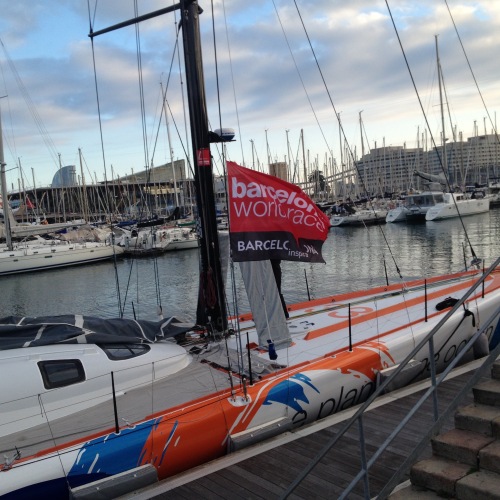Ocean research perspectives gleaned from ‘One Planet One Ocean’ conference in Barcelona, Spain - Part 2
Bill Dennison ·This is a continuation of my blog on the several themes that emerged at the 2nd International Ocean Research Conference, entitled ‘One Planet One Ocean’.
Oceanic plastics. The realization that 28 million pieces of plastic enter the ocean every day was staggering. This includes macro plastics that accumulate in oceanic gyres, and tragically in the bellies of sea birds, sea turtles and marine mammals, and nano and microplastics that are incorporated into marine food webs and often serve as toxicant transport vehicles. One of the interesting talks about plastics was in Hong Kong where the Pearl River source led to huge accumulations on Hong Kong beaches. China is the largest plastic producer in the world. My alma mater, Sea Semester, has been collecting data on oceanic plastic for decades and it was nice to see that some of the ocean modeling, based on oceanic drogues to track circulation patterns used their data to validate the models. One of the more interesting talks was about the effort to quantify the amount of microplastics that were coming through sewage treatment plants, not an enviable task!

Oceanic technology. The use of various robots that can sample in huge, deep, corrosive, and harsh environments was a major theme of the conference. A model of a wave glider bouy/drogue system was at the conference, which I did not understand its significance until I saw the talk and video clips of this device in action. The surface unit was about the size of a surfboard and the subsurface set of moving vanes used wave energy to propel the unit forward at an average speed of 1 knot. The solar panels on the surfboard generated power for the sampling gear and the telemetry to send data ashore. The amazing thing was that these devices have withstood hurricanes and can be used with Conductivity-Temperature-Depth (CTD) profiling gear. All of the various devices have been able to capitalize on technological innovations in Global Positioning Systems (GPS) and the iridium satellite phone system.

Science Communication. Every plenary speaker invoked science communication in their talks; in particular, Sam DuPont was quite passionate in his ocean acidification talk about the need for becoming better at communicating science effectively. Jane Lubchenko talked about the need for scientists to enter “Pasteur’s Quadrant” of conducting both use-based and curiosity-based research and becoming “bi-lingual” in speaking to scientific and public audiences. Vander Zwaag talked about the “tangled currents of how science interacts with policy” and invoked the five hierarchical types of science: 1) informational science, 2) recommendary science, 3) advisory science, 4) advocacy science and 5) decisional science, each with its advocates and detractors. Murray Rudd presented survey results in which research priorities were ranked by various scientists from around the world and found that social scientists clearly ranked ‘Science Communication’ as the highest priority, but ecological scientists ranked cumulative stresses, ocean productivity and ocean acidification as highest priorities. The role of media was discussed and the importance of ‘media multipliers’ when the media reports the fights, rather than the agreements (reminding of the media adage that ‘if it bleeds, it leads’).
Citizen science can be viewed as an expression of science communication and the use of gear that sailing yachts could carry to measure pH and partial pressure of dissolved carbon dioxide (pCO2), among other parameters, could revolutionize our ability to detect key processes like ocean acidification. Barcelona sponsors a two-handed global ocean race in which small fast sailboats circle the globe without a landfall, often sailing very close to Antarctica (shortest distance with high prevailing winds). Since the deployment of Argo floats which alternately sink to sample the upper ocean and then bob to the surface to telemetry data to shore have good global coverage in tropical and temperate regions, but large gaps in the high latitudes, deployment of Argo floats by Barcelona race boats would be a boon to oceanography. We were introduced to the crew of one of the boats that will be carrying the Argo floats and deploying them as they race around the world.



There were many other topics covered at this international gathering of scientists, but these themes emerged for me as key and they were all quite compelling. I sincerely hope that there will be another International Ocean Research Conference before long.
About the author
Bill Dennison

Dr. Bill Dennison is a Professor of Marine Science and Vice President for Science Application at the University of Maryland Center for Environmental Science.